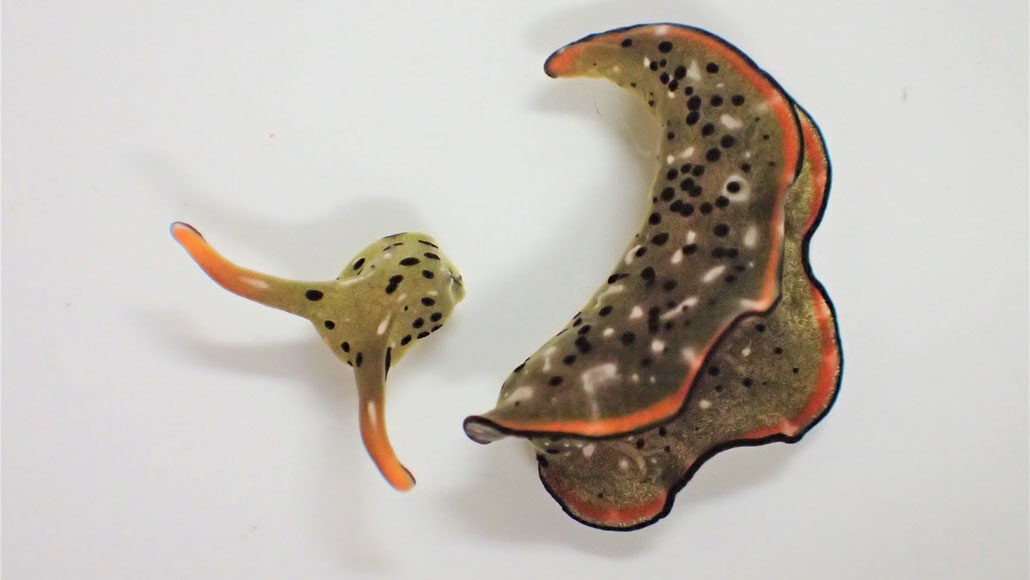Questions for “A sea slug’s head can crawl around and grow a whole new body”

The detached head of a sea slug (Elysia cf. marginata) glides by its still-living, leaf-shaped body a day after separation. That body, around 80 percent of the animal’s weight, is out of luck. It’s the head that survives, growing a new body.
S. Mitoh